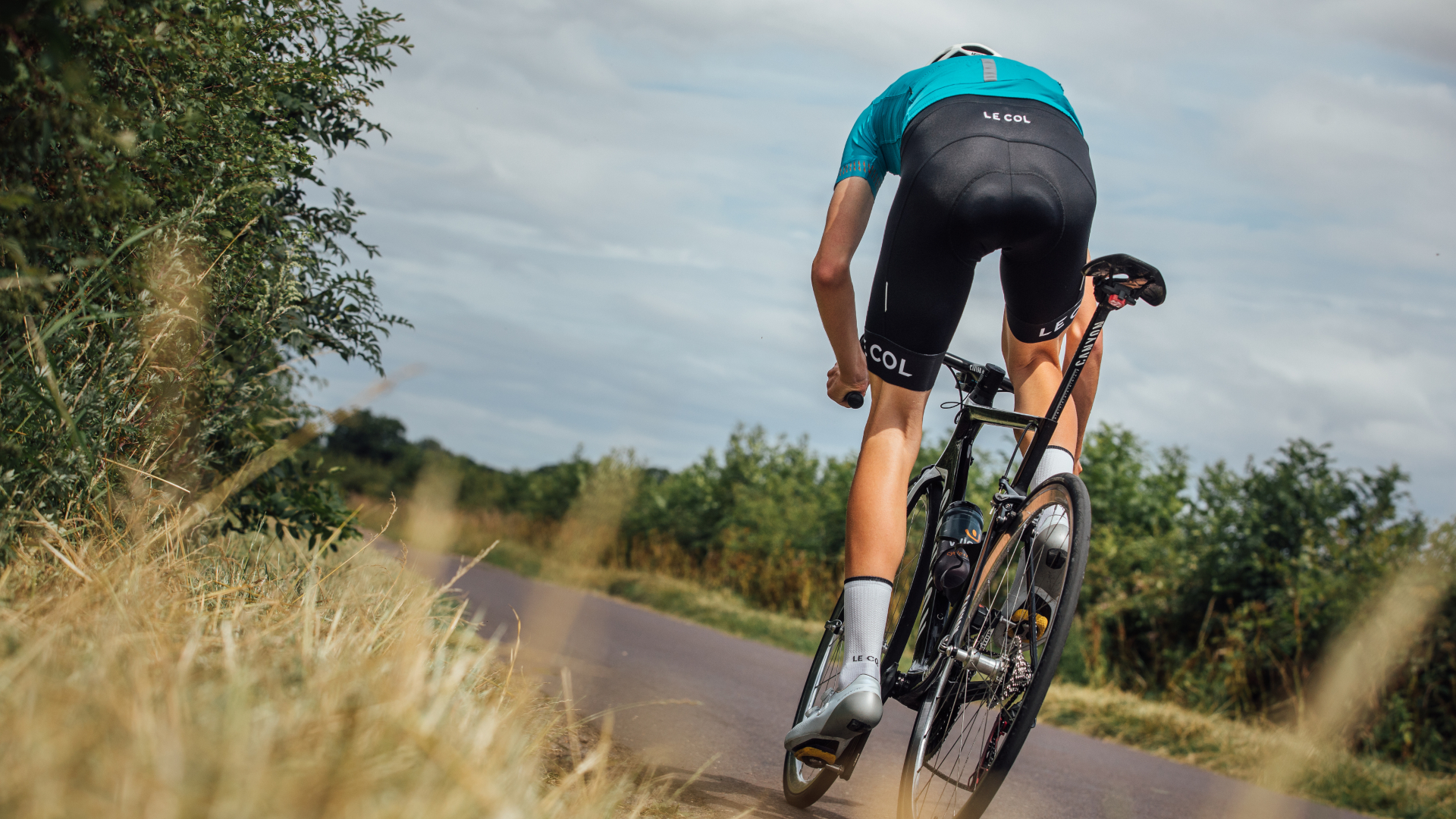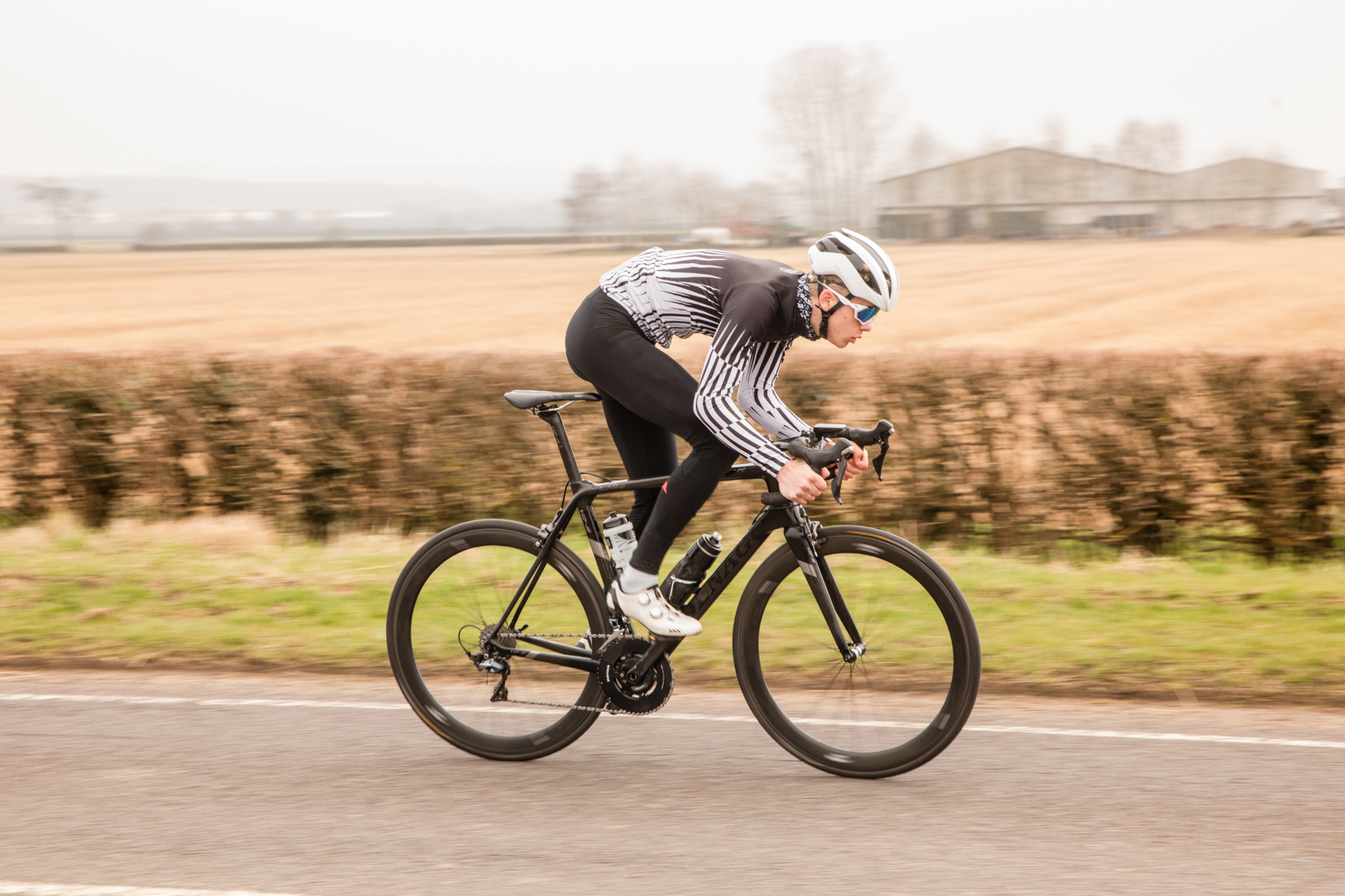How to get the most from a polarized training approach - and avoid the common pitfalls
To train effectively you need to include both high- and low-intensity rides, but has the 80/20 model had its day?

Over the past decade, it became widely accepted that polarized training is the best formula for endurance cyclists. According to this model, training is divided between intensities at polar opposite ends of the spectrum: very easy and very hard, in a roughly 80/20 split.
Recently, however, polarized training has become the subject of heated debate among sports scientists who disagree over what constitutes the optimum intensity distribution. Some researchers have begun arguing against conventional polarisation, instead favouring schedules that incorporate more middle-intensity riding. The debate raises the question of whether we need to rethink – or at least think more carefully about – how we define and implement polarized training.
What is polarized training in cycling?
In polarized training as conventionally conceived, the majority (75-80%) of training is conducted at a low intensity that feels easy. The remaining time is spent at a high intensity, while middle intensity training, often referred to as Zone 3, tempo, sweetspot or threshold (an effort level that could be described as ‘comfortably hard’) is largely shunned.
A polarized approach to intensity distribution sounds simple enough: keep your training mostly easy while including a sprinkling of high-intensity sessions. However, defining what we mean by polarized training can actually be quite tricky. This question of definitions was the crux of the recent debate, which highlighted the importance of making sure we’re clear on the terms we’re using.
In this feature, we’ll tackle the subtleties of polarized training, the common pitfalls encountered, and how to get the most out of this popular training approach.
Why is polarized training effective?
Before delving into the intricacies of a polarized approach, it’s worth spending a moment considering why it might be a good strategy. First and foremost, a polarized approach – which soon we’ll define more precisely – is used by many successful professional endurance athletes, but also appears to be an effective training strategy for time-crunched amateurs. Studies have found that nine weeks of polarized training can improve VO2max by as much as 12%.
It appears that polarized training works well, and we know that many training adaptations occur as a function of training volume rather than intensity. Long bouts of low-intensity riding promote efficient fat oxidation, a critical element of endurance performance. By keeping intensity low most of the time, except for key high-intensity sessions, it’s possible to keep the overall training stress low yet still elicit strong adaptive responses. This also helps avoid overtraining, and ensures sufficient freshness for the key hard sessions.
How high and how low to go?

There is a whole host of ways to delineate the low, medium and high-intensity cycling training zones. If you want to get very precise, you can visit a laboratory to have these zones determined by measuring lactate and gas exchange. However, this isn’t necessary for everyone, and you can establish usable zones by using the following generic guidelines:
To keep it simple, we’ll refer to three zones only: the low-intensity zone (which we’ll refer to as ZL) is from effortless spinning up to approximately 75% FTP, 83% of threshold heart rate (HR) or 70% of maximum HR. However, the precise cut-off point differs from person to person, and the best way to gauge this is via breathing rate. In ZL, you should be breathing very comfortably and able to hold a conversation easily.
When you step into the middle intensity zone (ZM), you’ll notice a marked increase in your breathing rate, and you’ll find you need to start speaking in shorter or more broken sentences.
High-intensity training (ZH) can be roughly defined as anything above your FTP or above 85-90% max HR.
Importantly, when riding in ZH, you’ll notice your HR rising ever higher towards your max, even when holding a constant power. You’ll also notice that when stepping from ZM to ZH, you shift from being able to speak a few words between breaths to panting and struggling to say more than a single word.
Get The Leadout Newsletter
The latest race content, interviews, features, reviews and expert buying guides, direct to your inbox!
Is my training polarized?
One of the trickiest things about this approach is assessing whether your training is polarized overall. In determining this, you need to assess your training over a relatively long period of time. Analyse at least a week’s worth of data to assess your training intensity distribution, or ideally a longer period of between four and 12 weeks.
There are two main ways to assess the polarisation of training. The first is the so-called ‘session goal’ approach, where an entire training session is classified as either easy, medium or hard, based on the outcome goal of the workout. Another approach is to look at the amount of time spent in each of the three intensity zones (ZL, ZM, ZH), known as the ‘time-inzone’ approach. The intensity distribution can look distinctly different depending which approach you use.
Let’s take an example where we have four sessions per week, each lasting one hour. Three of these are in ZL, and the fourth includes four eight-minute intervals at ZH, with the remaining time at ZL. With the session goal approach, three (75%) of the sessions are easy, and one (25%) is hard. However, when looking at time in zone, 87% of training time (3hr 28min) is ZL and only 13% at ZH (32 minutes) – note the contrasting percentages.
Understanding the difference between these approaches is very important in assessing whether your training is truly polarized. When people speak of 75-80% of training sessions being low-intensity, they tend to be referring to sessions rather than time. When you look at time in zone, you’ll often find a higher percentage of time spent at a low intensity (usually 80-95% of time).
In my view, the session goal approach is the preferable way of keeping tally because it’s very easy to make sure you’re getting the right balance of training intensities without the faff of calculating exactly how much time you’re planning to spend in each zone. Just be aware that the session goal approach can give rise to some tricky classification cases - here are a few guidelines to help out:
ZL ride with a little ZM: Provided that the majority of training time is ZL and the amount of ZM riding doesn’t feel too challenging, then I’d classify this as a low-intensity session. An example might be a three-hour ZL ride with 15-30 minutes of ZM.
ZL ride with a little ZH: Provided the amount of ZH riding is relatively low (i.e. it doesn’t feel as tiring as a full blown interval session), this can still be classified as a low-intensity ride. An example might be a three-hour endurance ride with four two-minute efforts slightly above your FTP.
Group/unstructured ride: These are hard to classify, as they generally don’t have a clearly defined goal. Think about how hard the ride felt overall. If it was a tough, competitive ride with lots of attacks and surges, then classify it as high-intensity. If you were pushing reasonably hard but within your comfort zone, classify it as medium-intensity. If you were able to chat happily to your fellow riders and felt comfortable, classify it as low-intensity.
Skills session: Skills sessions can involve a variety of intensities. Just like group/unstructured rides, try to consider how hard the session felt overall and how hard you were breathing, and classify accordingly.
Races: Even though some long events (e.g. sportives or gran fondos) will be done at a medium or even a low intensity, there will have been demanding aspects, whether in terms of intensity or duration, so classify as high-intensity. This helps to avoid burn-out from including too much intensive training around your racing/events.
Strength training: Strength training induces fatigue quite differently from bike training, so don’t include these sessions when calculating polarized training proportions.
The 80/20 paradigm

A common misconception about polarized training is that middle-intensity (ZM) training should be omitted almost entirely, a notion perpetuated by the ‘80/20’ mantra. However, this is an oversimplification, and you only have to look at a pro cyclist’s training schedule to see that middle-intensity training remains important, even in a polarized plan.
Among successful athletes, research shows that, in schedules using the ‘session goal’ approach, around 5% are middle-intensity (ZM) sessions. That’s roughly one in 20 sessions where the main goal of the session is to ride at a middle intensity. What’s more, when we look at the actual time in zone, we can see that most high-level cyclists have what might be referred to as a ‘pyramidal’ intensity distribution: the vast majority of training time (at least 80%) is still at ZL but there is more time spent at ZM (typically 10-15%) than at ZH (e.g. 8%).
The seeming discrepancy in these intensity distributions appears to be caused by sessions that include a mixture of intensities. For example, the main goal of a session might be to ride in ZL but it may include a smaller proportion of ZM riding. When we use the session goal approach, the amount of ZM riding is under-represented. Ultimately, whichever approach you use to assess your intensity distribution, the key foundational aspects are that:
- The majority of training time (at least 80%) be spent at a low intensity (ZL)
- The remaining time be distributed between medium and high intensities (ZM, ZH), with neither of these zones omitted entirely
Is polarized training a useful approach for time-crunched riders?
A common question is whether time-crunched cyclists should do a higher proportion of high-intensity (ZH) training to make the most of their limited available time. It’s worth reiterating here that many training adaptations occur as a function of riding duration and are not enhanced by riding harder. So intensifying training may not necessarily make you faster and may even be detrimental to the goal of that particular session.
It’s also important to appreciate that time-crunched cyclists often have the least capacity to recover between sessions, due to busy work and family commitments, and typically have compromised sleep. Thus, over-intensifying training (e.g. above 20% at ZH) could be detrimental to recovery. Including plenty of low-intensity riding is often safer, and fosters better consistency over the long term.
That said, given that time-crunched athletes may only be able to get in one or two longer rides per week, a pyramidal approach (sample plan on next page), including a weekly ZM session, does tend to work well – particularly when the ZM is ridden at a low cadence and is (cautiously) combined with carbohydrate restriction. Limiting carbs before and during a ZM ride is not intended to increase the weekly training stress but instead is to activate some of the metabolic stimuli experienced towards the end of a longer ride. This partially (but not entirely) helps to make up for the absence of regular longer rides.
How should polarized training be periodized?

A fundamental principle of training is that it should evolve over time. This is known as periodisation, and can help to avoid fitness stagnation, as well as allowing you to build up your fitness in a logical, progressive way.
Periodisation is not just for elite athletes seeking to optimise their fitness, but also for amateur cyclists, who will benefit both mentally and physically from a changing training stimulus.
Training can easily be periodised using a polarized framework by changing the focus of your high-intensity interval sessions throughout the year. To give an example, you might break your season down into ‘phases’ and ‘mesocycles’ (blocks of training typically lasting from four to 12 weeks). In each block, you might focus on a particular type of training session, such as VO2max intervals (e.g. five-minute efforts with a one-to-one work-to-recovery ratio), or glycolytic power intervals (e.g. one minute efforts with a one-to-five work-to-recovery ratio).
You can also make your training more or less polarized at different points in the year. For example, earlier in the year, you might adopt more of a pyramidal intensity distribution (perhaps 75% of sessions being at ZL, 15% at ZM, and 5% at ZH). Then closer to your main training event or goal, you might cut down on ZM in preference of more ZH sessions. No single periodisation approach suits everyone; the best for you will depend on the attributes of fitness you need to develop, and your target event or goal.
Sample polarized training plan
Below is an example of a polarized training plan for a lower-volume athlete. Each week contains the most effective quota of low, medium and high intensity work.
WEEK 1
Monday: Day off
Tuesday: 1hr ride, mostly low-intensity, but with 3x 8min intervals at high-intensity
Wednesday: 1.5hr ride, mostly low intensity, but with 2x 10min middle-intensity towards end
Thursday: Day off or 30min recovery ride
Friday: 1hr ride, mostly low-intensity, but with 3x 8min intervals at high-intensity
Saturday: 2.5hr ride, mostly low intensity, but with 30min middle-intensity riding
Sunday: 3-4hr all low-intensity
WEEK 2
Monday: Day off
Tuesday: 1hr ride, mostly low-intensity, but with 3x 8min intervals at high-intensity
Wednesday: 1.5hr ride, mostly low intensity, but with 2x10min middle-intensity towards end
Thursday: Day off or 30min recovery ride
Friday: 1hr ride, including 3x 15min middle intensity intervals
Saturday: 2hr ride, mostly low intensity, but with 30min middle-intensity riding
Sunday: 3-4hr all low-intensity
Key principles for polarized training
Despite the recent debate about polarized training, there are some key principles that all parties agree on and which personally I have found to be effective across a wide range of athletes.
Firstly, make sure roughly 80% of your training time is spent at a low intensity. The remaining training time can be divided between medium and high intensity riding, with the specific focus of the combination of sessions evolving across the year.
Try not to include high-intensity riding too often – you need sufficient time to recover between these sessions. As a rule of thumb, limit high-intensity sessions to one or two per week, except under special circumstances. Remember that adding up time in zone is not the same as the session goal approach.
Be clear on which approach you’re using to assess your training intensity distribution. If you’re calculating by time in zone, your intensity distribution may look more pyramidal, with slightly more ZM than ZH, and that’s fine.
If you keep these principles at the forefront of your mind, you should have the foundations of a solid cycling training plan to prepare you thoroughly and effectively for most disciplines of the sport.

Thank you for reading 20 articles this month* Join now for unlimited access
Enjoy your first month for just £1 / $1 / €1
*Read 5 free articles per month without a subscription

Join now for unlimited access
Try first month for just £1 / $1 / €1
Tom Bell is reigning British hill-climb champion and coach at High North Performance.
-
 Full Tour of Britain Women route announced, taking place from North Yorkshire to Glasgow
Full Tour of Britain Women route announced, taking place from North Yorkshire to GlasgowBritish Cycling's Women's WorldTour four-stage race will take place in northern England and Scotland
By Tom Thewlis
-
 Positive signs for UK bike industry as Halfords cycling sales grow
Positive signs for UK bike industry as Halfords cycling sales growRetailer admits that the impact of Donald Trump's tariffs remains to be seen
By Tom Thewlis